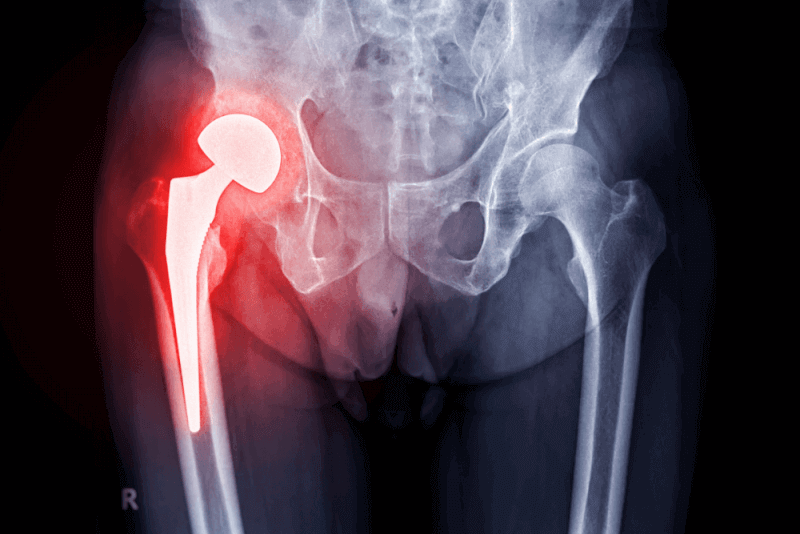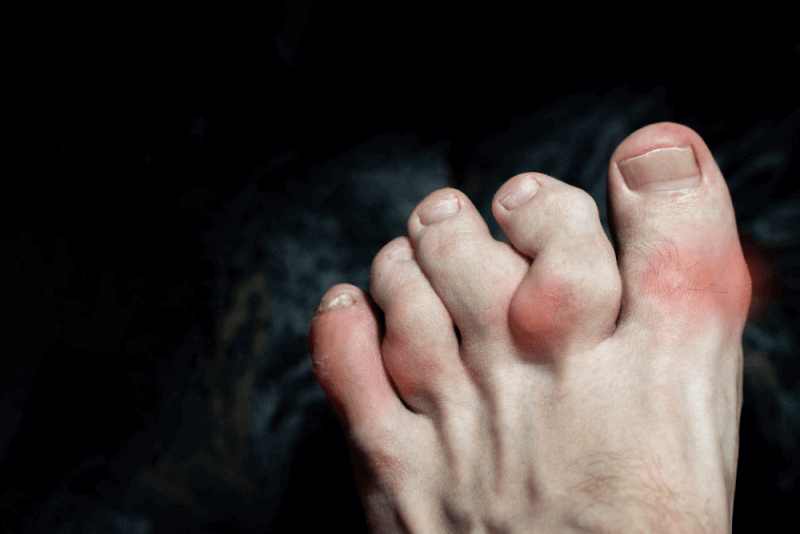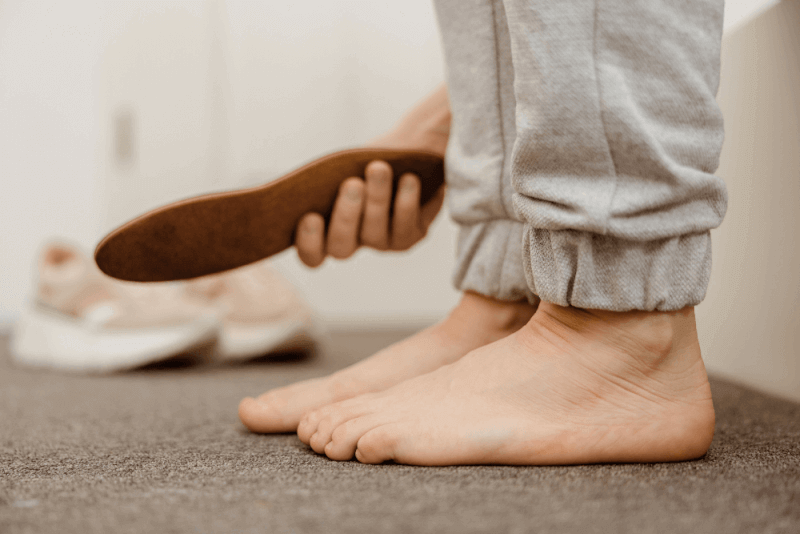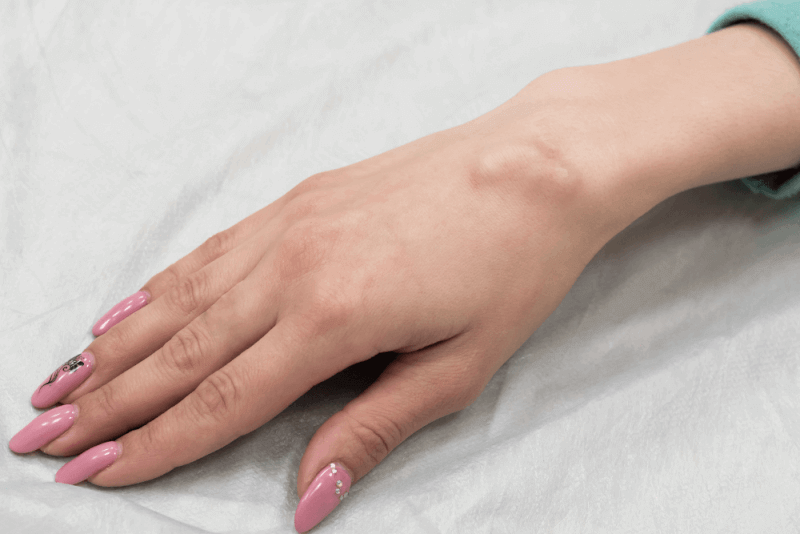What is Avascular Necrosis (Osteonecrosis)?
Avascular necrosis is the death of bone tissue due to the interruption of blood supply. Also known as osteonecrosis, this condition leads to the death of bone cells and the weakening of the bone structure. It is generally seen in the shoulder, knee, and hip joints.
Causes of Avascular Necrosis (Osteonecrosis)
- Excessive alcohol use
- Trauma
- Fracture
- Prolonged use of corticosteroids
- Fat deposits in blood vessels
- Prolonged steroid use
- Sickle cell anemia
- Obesity
- Radiation therapy
- Chemotherapy
- Pancreatitis
- Metabolic disorders
- Autoimmune diseases
- Gaucher disease
Symptoms of Avascular Necrosis (Osteonecrosis)
The first symptom of avascular necrosis is typically groin and hip pain. Other symptoms include:
- Pain around the hip
- Limping
- Restricted joint movements
- Groin pain radiating to the knee
- Slowed movements
Some people may not experience any of these symptoms. Avascular necrosis can be a silent disease, and pain may not be noticed until much later. When pain does occur, it is often more noticeable in weight-bearing bones.
Diagnosis Criteria for Avascular Necrosis (Osteonecrosis)
To diagnose avascular necrosis, the first step is to take the patient's medical history. If there is pain, its location and severity are assessed. A definitive diagnosis requires physical examination and MRI results. In addition to MRI, bone scanning is also a supportive imaging method for diagnosis.
Treatment Methods for Avascular Necrosis (Osteonecrosis)
- The goal of treating avascular necrosis (osteonecrosis) is to relieve the pain in the affected joint and restore lost function. Treatments focus on stopping bone destruction and eliminating movement restrictions. The primary treatment involves rest. By resting, the load on the joint is reduced.
- If the patient is on corticosteroid therapy, it is minimized or discontinued.
- If there is alcohol addiction, this is treated.
- Physical therapy is provided to relieve the joint.
- Hyperbaric oxygen therapy is used to reduce joint pain.
- As a last resort, surgical techniques are used to intervene in the joint.
Physical Therapy
Physical therapy plays a significant role in the treatment of avascular necrosis (osteonecrosis). Tailored physical therapy exercises are applied to the joints to relieve bones and joints. Light exercises such as nature walks, cycling, and yoga can also support the treatment.
Avascular Necrosis (Osteonecrosis) Surgery
Avascular necrosis surgery is generally performed if the initial stage has passed. In the early stages of the disease, non-surgical treatments are continued. The type of surgery depends on which joint is affected and the condition of the bone tissue. In osteonecrosis of the hip, total hip replacement or hip-preserving surgery may be performed.
Methods of Avascular Necrosis (Osteonecrosis) Surgery
There are generally two methods used in avascular necrosis surgery.
- Core Decompression method: Blood flow slows down and damages the bone when the artery in the femoral head becomes blocked. As a result, edema forms in the femoral head. In the core decompression method, a tunnel is opened in the edematous area. This tunnel reduces the edema in the femoral head and allows the blood vessels to carry more blood. It is a method applied at the end of Stage 1 and in Stage 2.
- Vascularized Fibula Graft method: The fibula bone is a thin bone located below the knee. Since it does not play a role in bearing weight, an artery and vein are taken from the middle of this bone. A hole is drilled into the femoral head affected by avascular necrosis, and the fibula is placed. The removed vessels are then sewn onto the leg vessels. It is a microsurgical method. It is generally applied in Stages 2 and 3.
Benefits of Avascular Necrosis (Osteonecrosis) Surgery
After avascular necrosis surgery, patients can perform daily activities more comfortably and are relieved of pain. Improvements are seen in individuals with limping and movement restrictions.
Complications of Avascular Necrosis (Osteonecrosis) Surgery
- Infection
- Bleeding
- Pain
- Edema
- Re-blockage of the vessels in the vascularized fibula graft method
- Continued joint restriction
What Should Avascular Necrosis (Osteonecrosis) Patients Pay Attention To?
- Avascular necrosis patients should avoid alcohol and smoking.
- They should avoid movements that put too much strain on their joints.
- They should not lift heavy weights.
- They should rest frequently to relieve joint stress.
- If there is a weight problem, they should lose weight.
- If there is long-term use of steroids or similar drugs, it should be stopped.
- If there is a drop in blood values or autoimmune diseases, treatment should be started.
Avascular Necrosis (Osteonecrosis) Recovery Process
In the recovery process of avascular necrosis, treatment is started by considering the patient's age, the stage of osteonecrosis, whether there is an underlying condition causing osteonecrosis, and the patient's daily life routines.
If surgery is not required, the patient can continue with daily life through physical therapy and light exercises, thereby improving quality of life. If avascular necrosis is treated surgically, the recovery process may be longer. The patient will need a lot of rest, and movement restrictions may be imposed until full recovery.
Stages of Avascular Necrosis (Osteonecrosis)
Avascular necrosis is staged based on the location of the joint and the extent of bone necrosis.
Stage 1 of Avascular Necrosis (Osteonecrosis)
In the first stage of the disease, edema is seen in the cartilage. At this stage, core decompression surgery can be performed. Ozone therapy, rest, or hyperbaric oxygen therapy can also be beneficial at this stage.
Stage 2 of Avascular Necrosis (Osteonecrosis)
In the second stage of the disease, the cartilage is still intact, with no cracks or collapse. It is recommended to perform core decompression surgery directly at this stage.
Stage 3 of Avascular Necrosis (Osteonecrosis)
In the third stage of the disease, small collapses and cracks are seen in the cartilage. At this stage, fibula grafting or only pain management can be performed. If the pain is unbearable, a prosthesis can be applied.
Stage 4 of Avascular Necrosis (Osteonecrosis)
In the fourth stage of the disease, the weight-bearing part of the cartilage has collapsed, and at this stage, treatment is generally not possible without a prosthesis.
Risk Factors for Avascular Necrosis (Osteonecrosis)
- Trauma
- Individuals with decompression sickness
- Circulatory problems
- Alcohol addiction
- Excessive steroid intake
- Individuals with sickle cell anemia
- Pregnancy
- Exposure to radiation
- Smoking
- Individuals with hemophilia are at a higher risk of developing avascular necrosis.
Which Areas are Affected by Avascular Necrosis (Osteonecrosis)?
Avascular necrosis is usually seen in large joints such as the knee, shoulder, and hip. Early diagnosis and treatment are crucial to preserving joint function.
Hip Avascular Necrosis
Hip avascular necrosis leads to deformation of the round part of the femur head, the upper thigh bone. The disease may present itself with hip pain and limping. As hip avascular necrosis progresses, it becomes a condition that significantly impairs the patient's quality of life.
Shoulder Avascular Necrosis
In shoulder avascular necrosis, the joints in the shoulder head are affected. Shoulder pain and restricted shoulder movements manifest with severe pain. The patient may have difficulty raising their arm or lifting objects.
Knee Avascular Necrosis
Knee avascular necrosis can present in three ways: spontaneous, secondary, and post-arthroscopy. Symptoms of knee avascular necrosis include severe pain, restricted movement, and joint locking with cracking sounds.








